The architect of the National Swimming Pool, Alfréd Hajós, was a leading figure of sports architecture in Hungary. An Olympic champion himself, Hajós won the 100 metre and 1200 metre swimming heats at the first modern Olympics in 1896 and proceeded to design several swimming pools and stadiums. He completed his studies as an architect three years after his Olympic wins. He worked with Ignác Alpár and opened his own design studio with János Villányi in 1904.
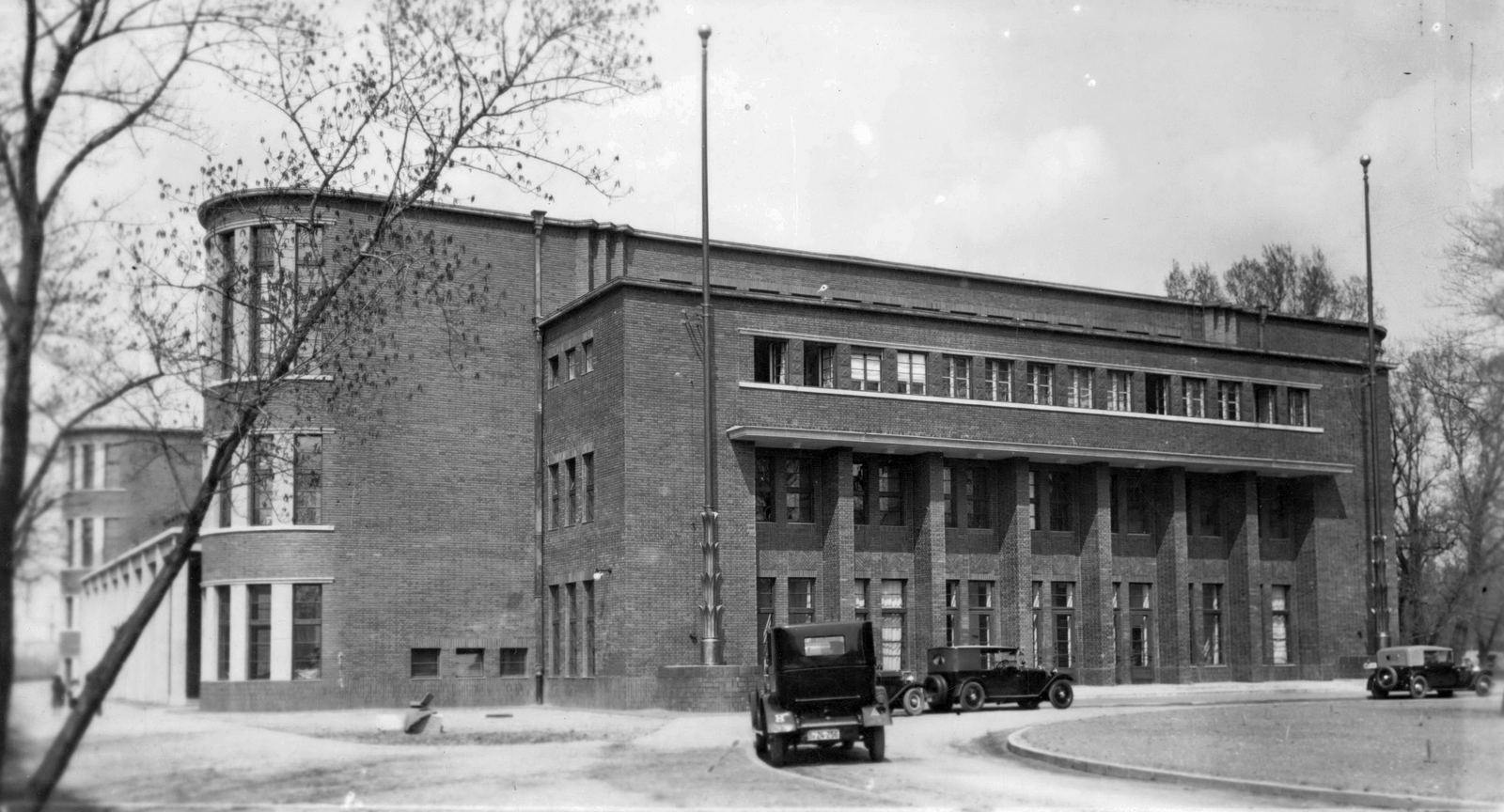 The Hajós Alfréd National Swimming Pool in 1931... (Photo: Fortepan/No.: 58265)
The Hajós Alfréd National Swimming Pool in 1931... (Photo: Fortepan/No.: 58265)
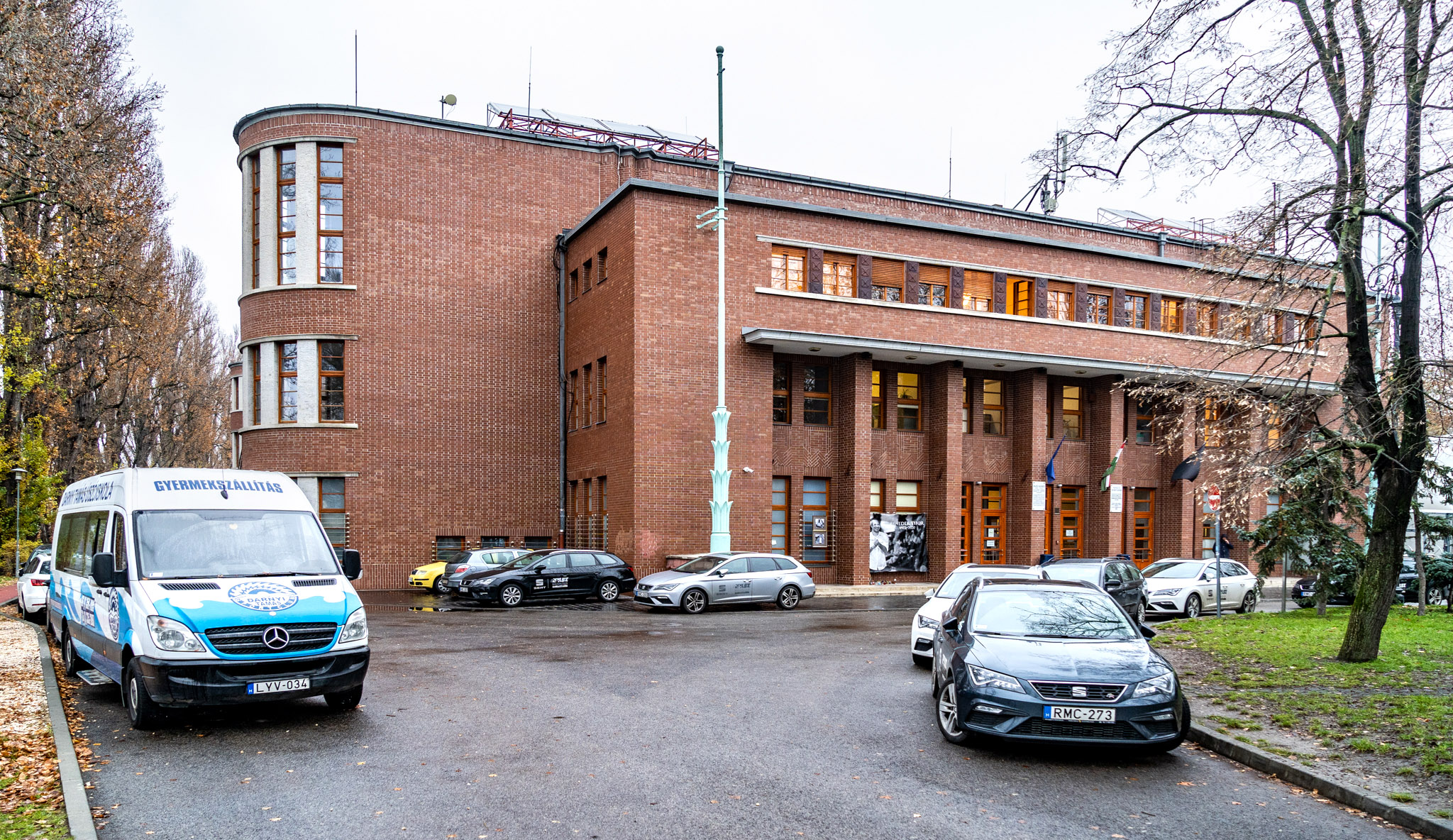 and today (Photo: Balázs Both/pestbuda.hu)
and today (Photo: Balázs Both/pestbuda.hu)
Between 1904 and 1914, Alfréd Hajós and his partner were commissioned to design several significant public buildings, including the synodic headquarters of the Reformed Church in Hungary in Budapest and the imposing palace of the Aranybika Hotel in Debrecen. They also co-designed the idea of a National Stadium to be built on Istvánmező.
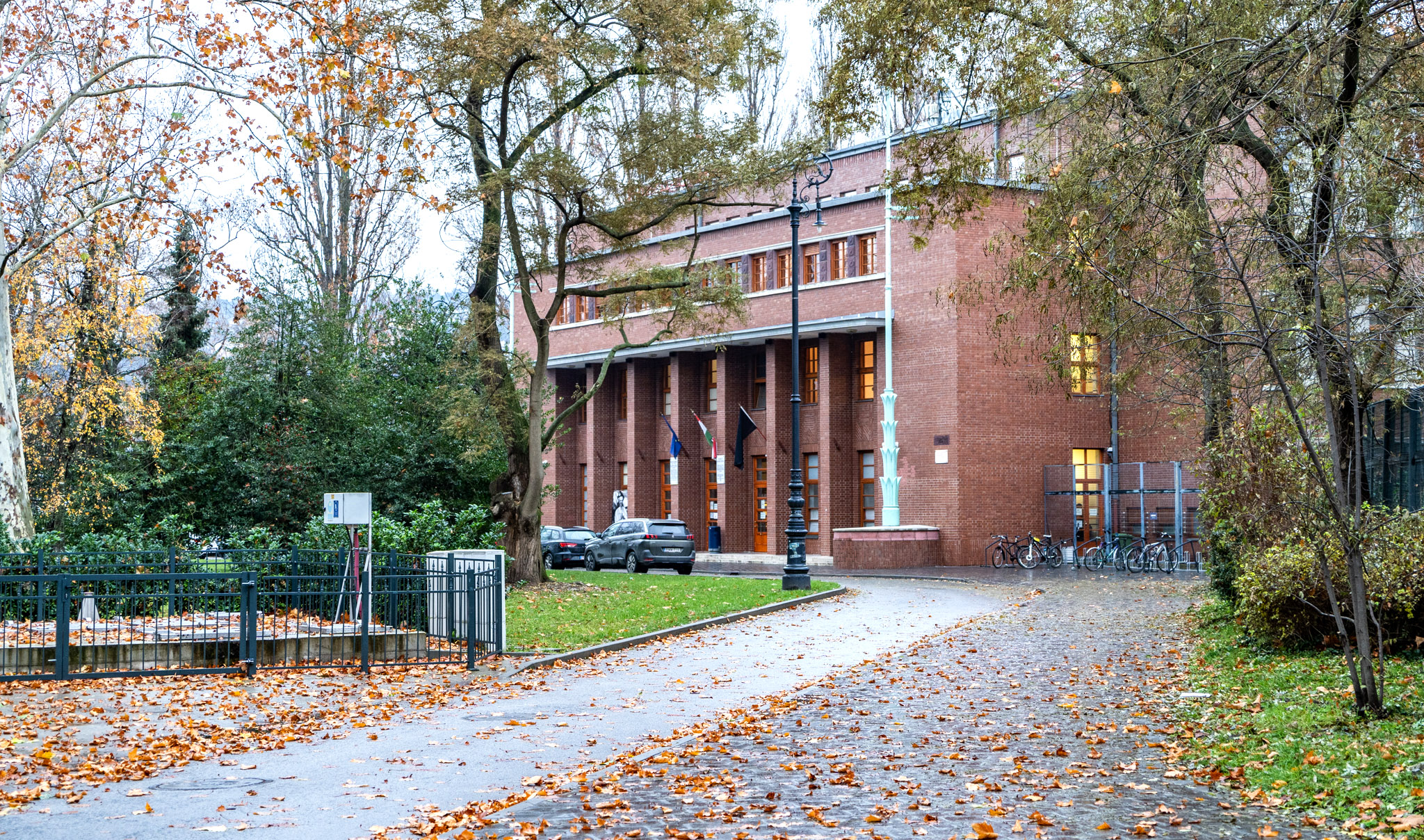
The plan included the creation of several sports facilities. In addition to the football stadium, the architects proposed covered and open-air swimming pools. After World War I, Alfréd Hajós opened an independent studio. While his joint plans with János Villányi were characterized by a combination of Central and Western European historicism and Art Nouveau, his own works revealed a turn towards modern architecture.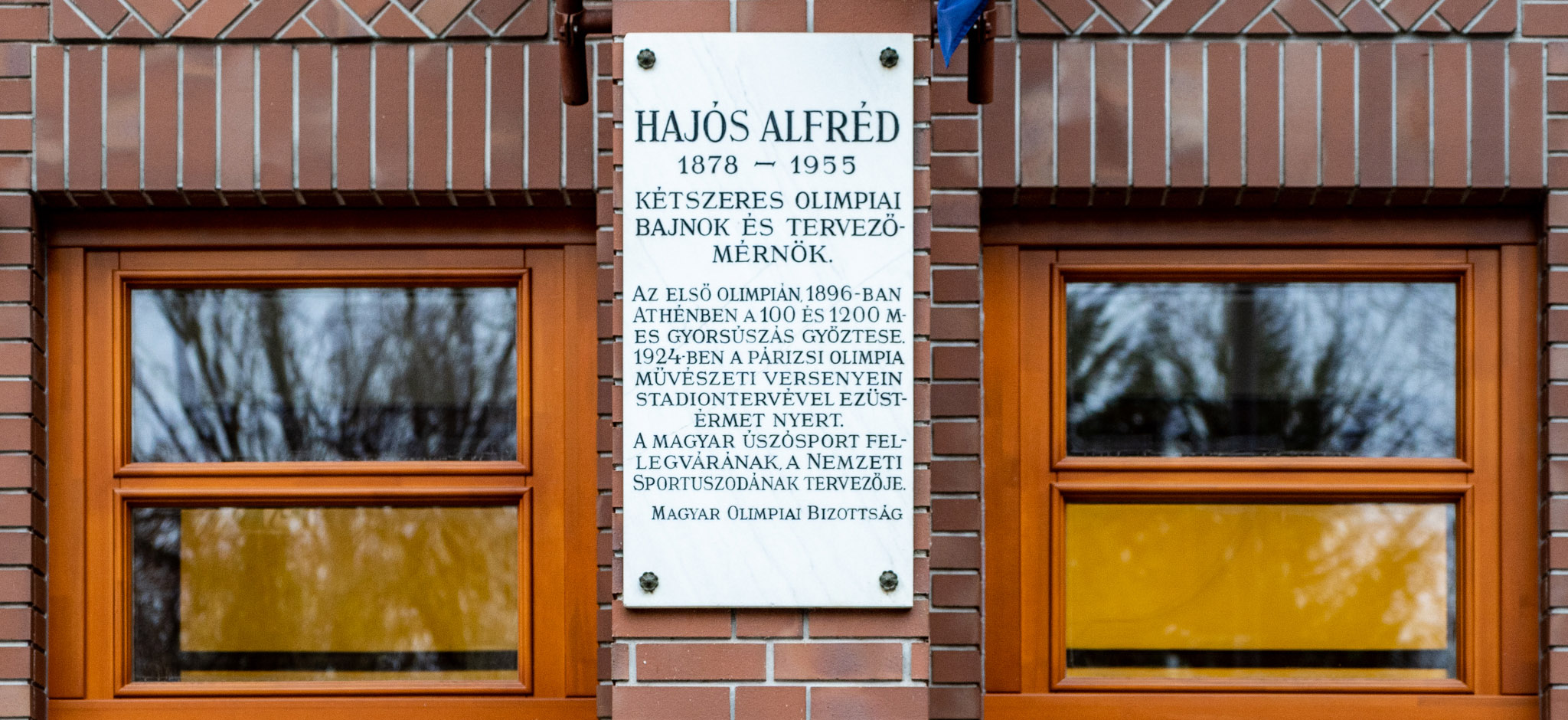
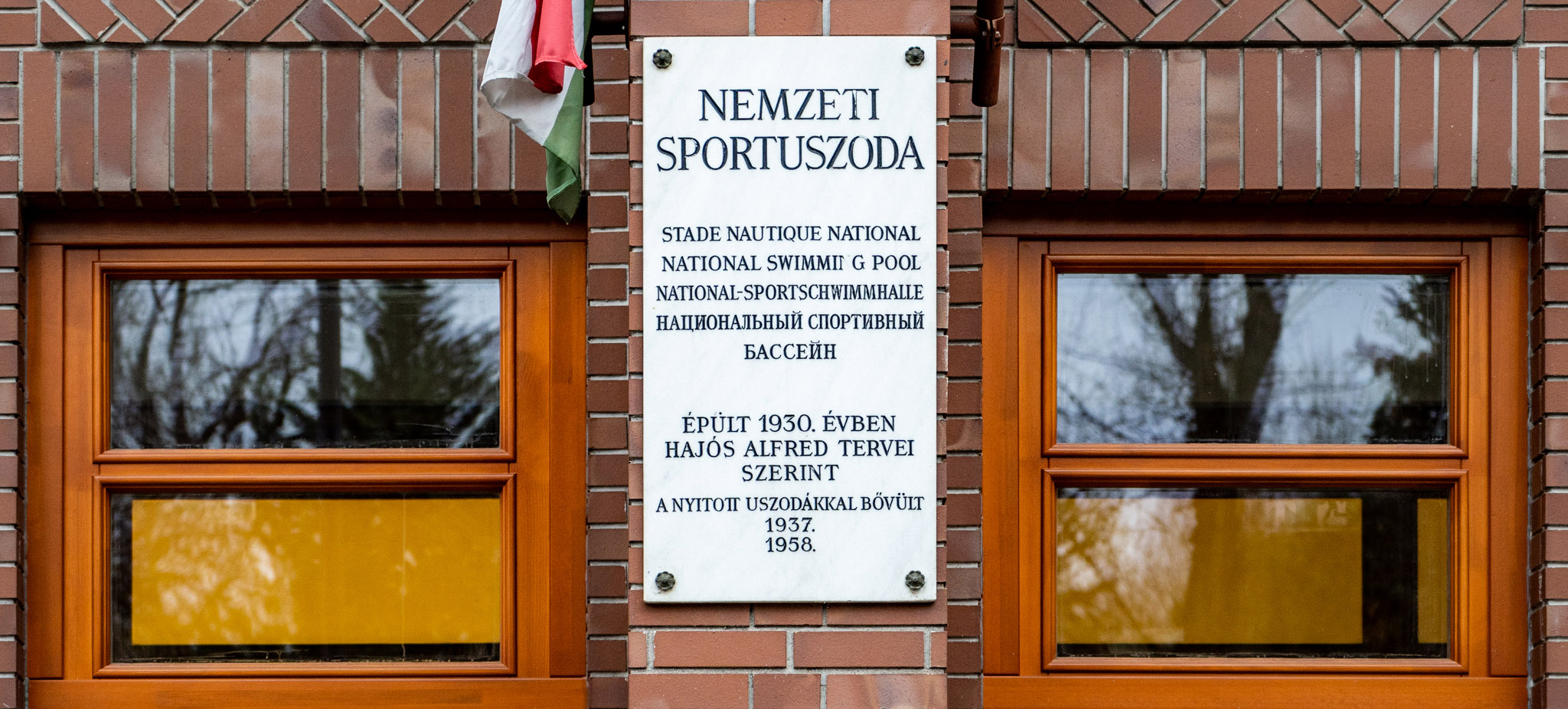
Between the 1920s and 1930s, he became the most sought after professional for designing buildings for sports. He was not only a practised designer of stadiums and swimming pools but completed several study tours. He wrote studies on several western swimming pools in the architectural periodical Tér és Forma.
The National Swimming Pool was commissioned by the Royal Hungarian Ministry for Religion and Education. The minister, Kuno Klebersberg (1875–1932), saw the swimming pool as a vital project.
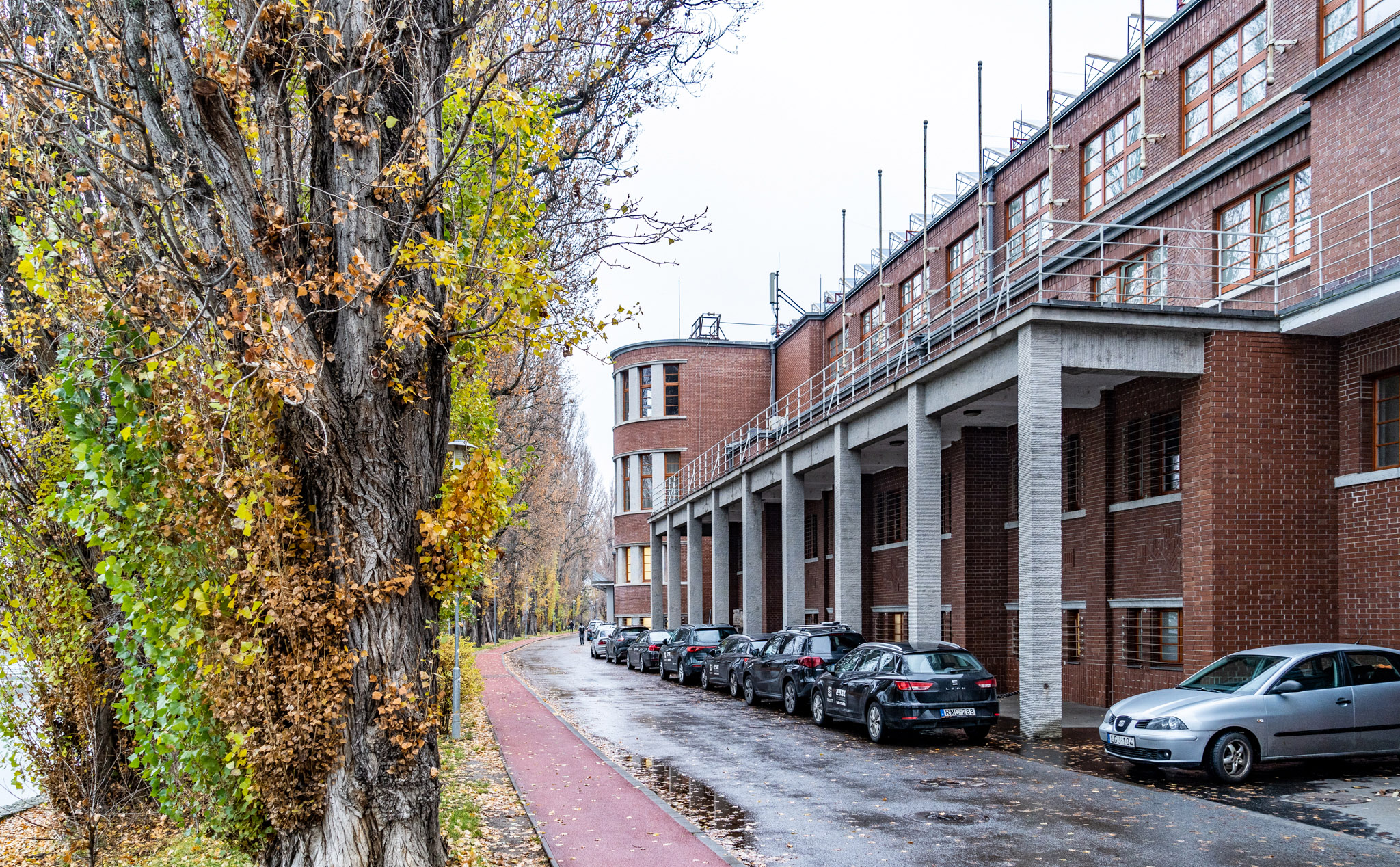
The realisation of the swimming pool on Margit Island was supported by the outstanding results of Hungarian water sports. Following Hajós' gold medals, Zoltán Halmay (1881–1956) also won gold, silver and bronze medals in swimming at the Olympics. In the 1920s the water polo team followed and won the silver medal at the Amsterdam Olympics in 1928. But to achieve even better results, better infrastructure was needed by the end of the 1920s.
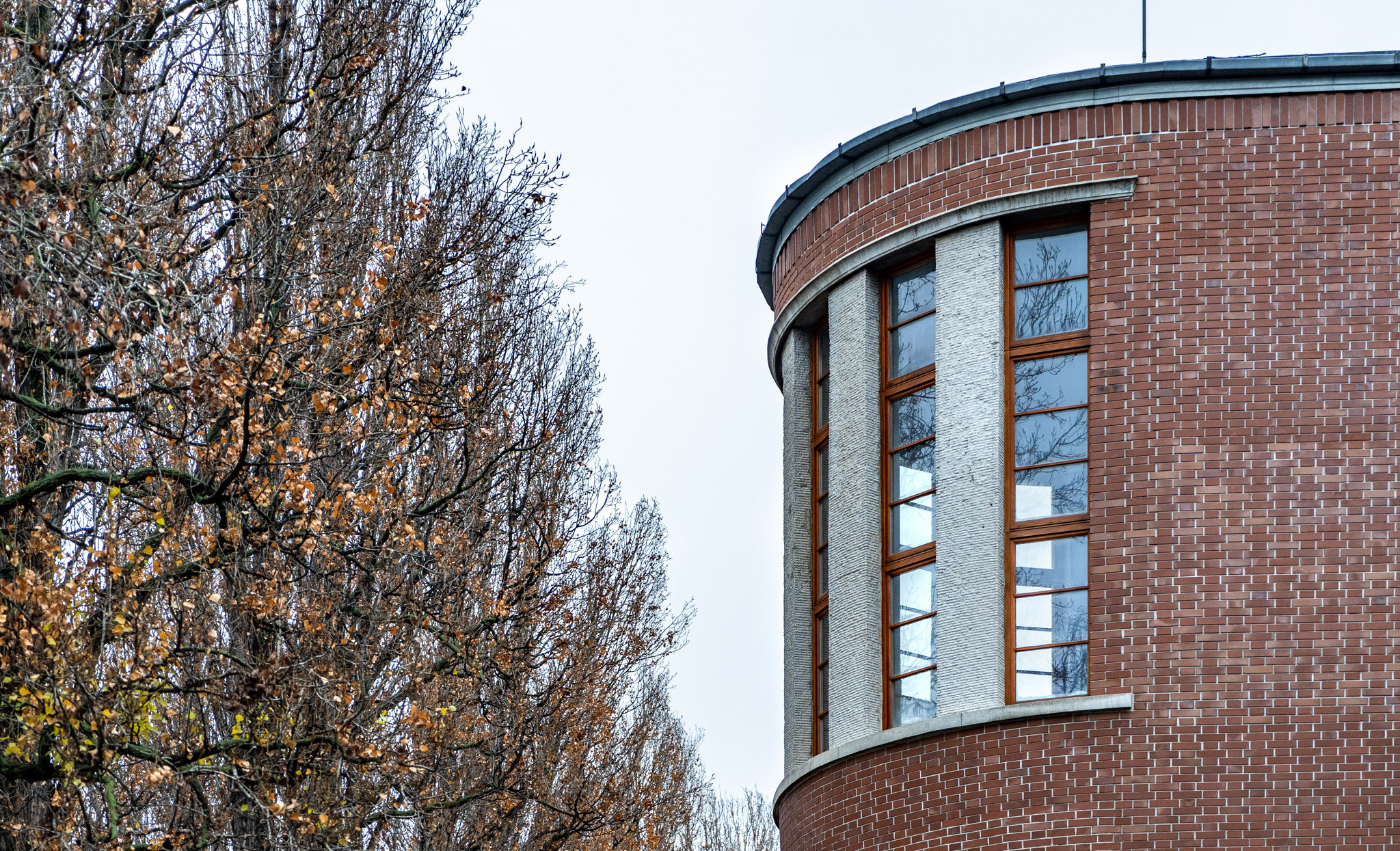
In the difficult economic climate of Hungary in the interwar years, the construction of the National Swimming Pool could be seen as a prestige project. Half of the costs were covered by the Royal Hungarian Ministry of Religion and Education, while Budapest covered the other half, each paying 1 million Pengős. Alfréd Hajós one the design tender for the project in 1929.
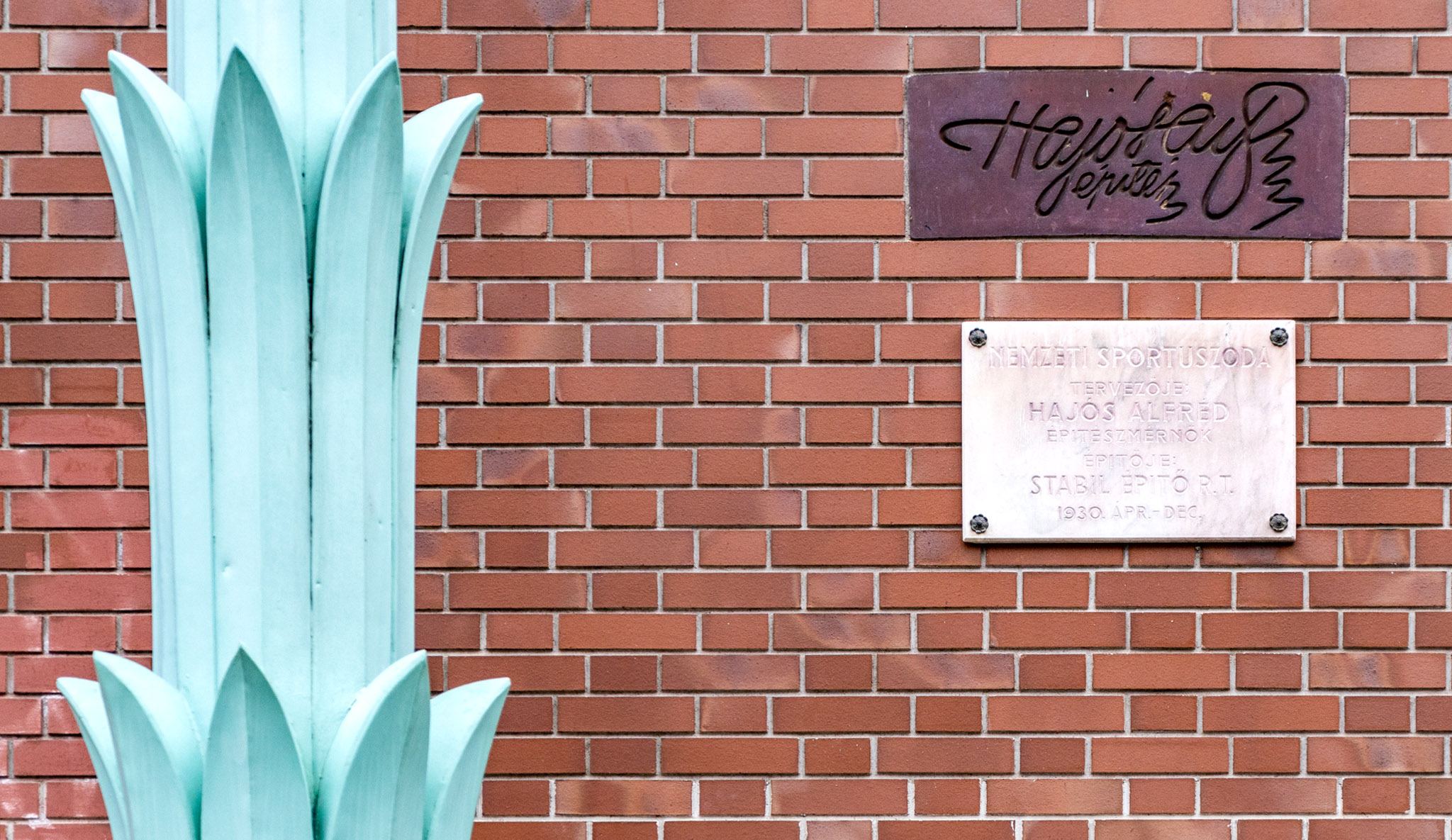
A more ornate dividing wall between the two swimming pools than the one built can be seen on one of the plans submitted by Alfred Hajós. The Magyar Hiszekegy ('The Hungarian Creed') written by Mrs Elemér Papp-Váry, née Szeréna Sziklay (1881–1923) in opposition to the Treaty of Trianon, can be seen on the wall in this plan, with two angels carrying the Hungarian national coat of arms above. Below the inscription, the vertical segmentation of the Eastern-style columns can be interpreted as a mirror of the main facade looking into the past.
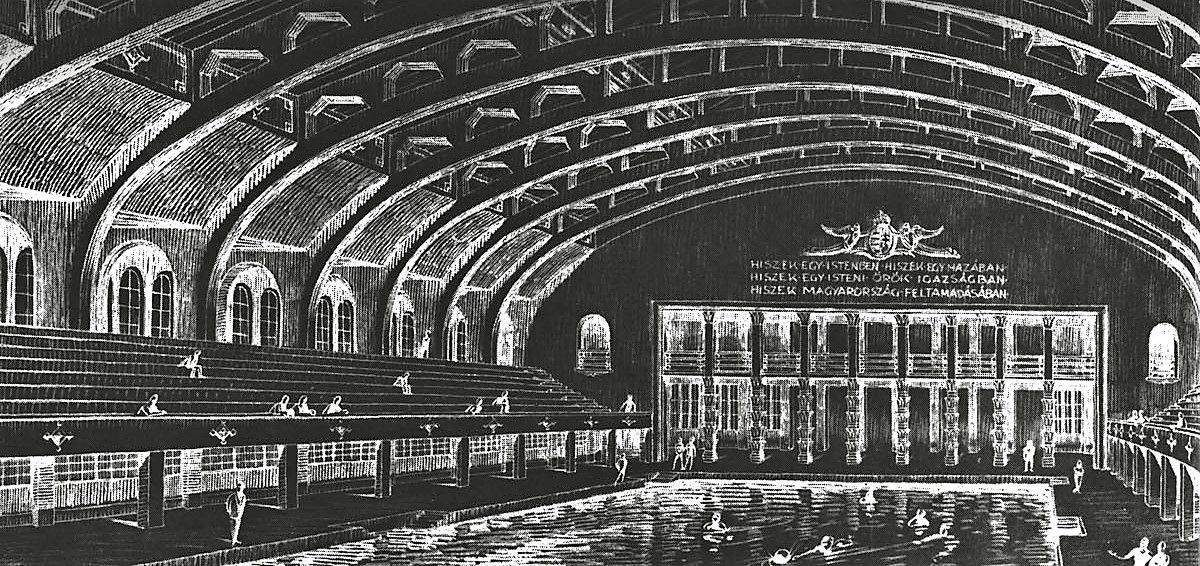
Hajós' winning plan in 1929, with the words of the Hungarian Creed on the wall.
Hajós omitted the Hungarian-style ornamentation of the swimming pool which would have emphasised its national character for a simpler design. This highlighted the reinforced concrete arches. The static plans were drawn up by Jenő Gerely (1880–1974), and Antal Sorg's construction company was contracted for the work. Construction took place from April to December 1930.
.

Due to the risk of flooding and high groundwater, Alfred Hajós placed the two pools on the first floor. The larger is 33.33x18 metres and suitable for races, while the smaller is 6x16.1 metres.
The stands on either side can seat one-thousand people. A 110-place gallery and a 12-person box-on-honour were added above the lobby. Seven hundred people could be seated above the small pool, and 220 could stand on either side. In total, the pool could house 2260 people. Below the pools, the ground floor housed the machinery, the changing rooms and the reception area.
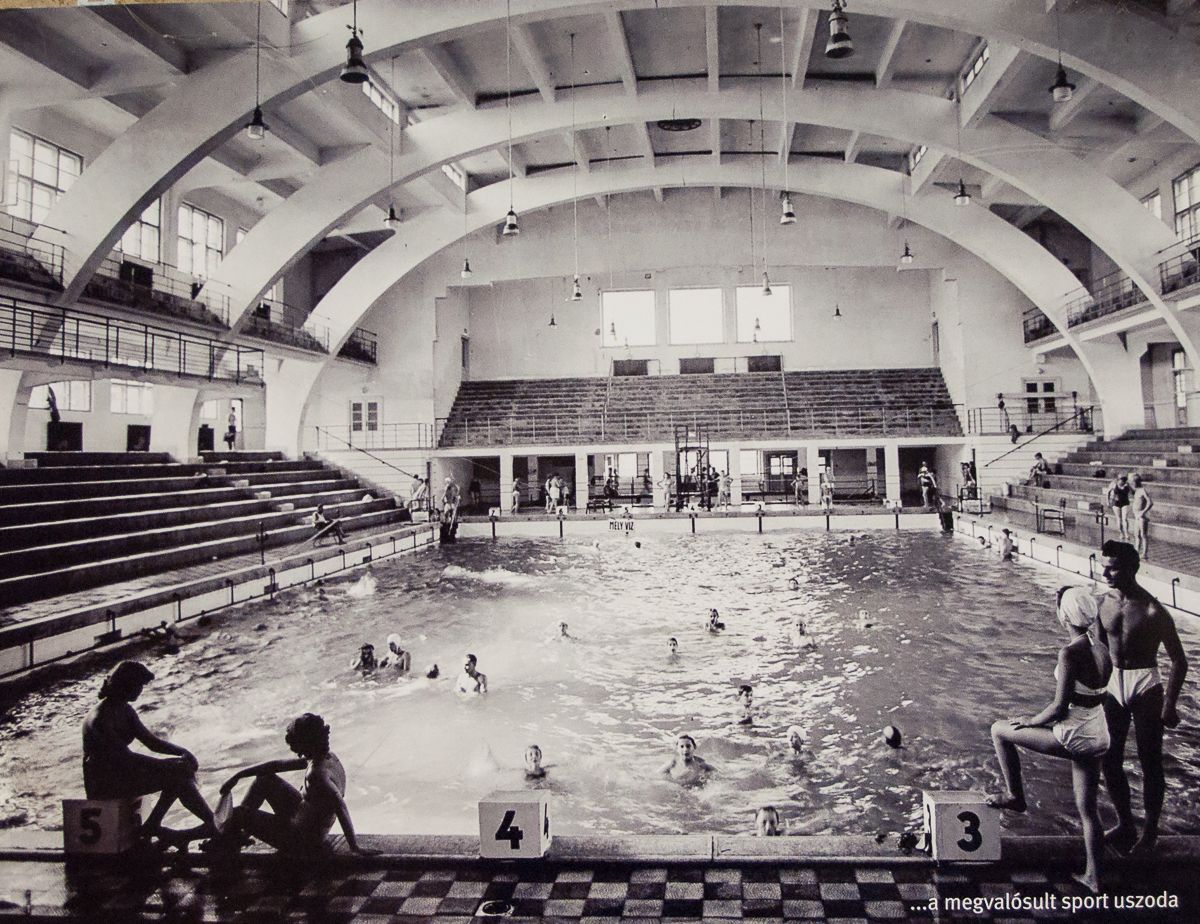
The National Swimming Pool was opened in 1930. A contemporary newspaper called it the crown of Alfred Hajós' career.
The building is reinforced concrete but decorated with clinker bricks on the outside. Two large ornate flagpoles stand before the main entrance decorated with sedge motifs. The motif popular in ancient Egypt is not only a reference to ancient culture but the living water of the world. Offices can be found above the main entrance and a service flat in the loft.
The vertically articulated design of the main facade can refer to the columns of Greek architecture, or be seen as the lanes of a swimming pool. Two semi-cylinders can be seen protruding from the building. The one at the front houses the staircase, while the other standing at the rear houses machinery.
The swimming pool was opened on 7 December 1930 in an elaborate ceremony. The minister Kuno Klebersberg; Mayor of Budapest, Jenő Sipőcz, and President of the Budapest Public Works Committee, Iván Rakoszky, gave speeches. Alfréd Hajós received the title of National Chief Councillor from Miklós Horthy, who attended the opening ceremony.
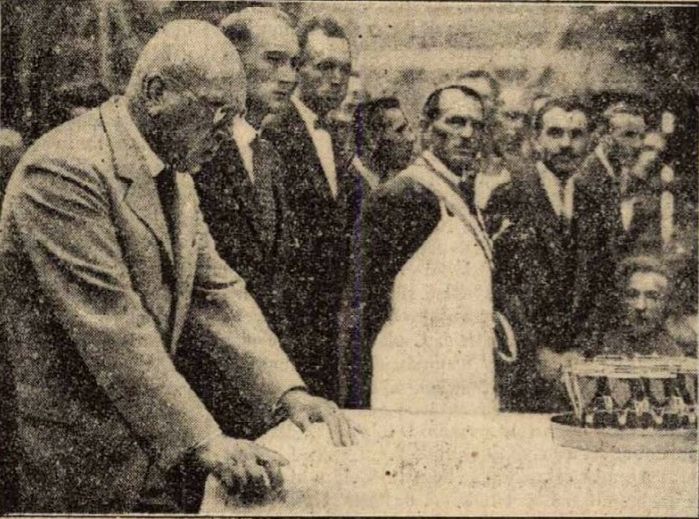
Alfred Hajós at the topping-out ceremony of the swimming pool on 29 June 1930 (Source: Pesti Napló, 31 July 1930)
Two bronze statues decorate the building's lobby, one of Alfred Hajós and the other of the water polo player Béla Komjádi (1892–1933). On a wall behind the statues, memorial plaques list the names of all athletes who have won championships in water sports. Over the last 90 years, the swimming pool has hosted several national and international swimming, water polo and pentathlon competitions and matches.
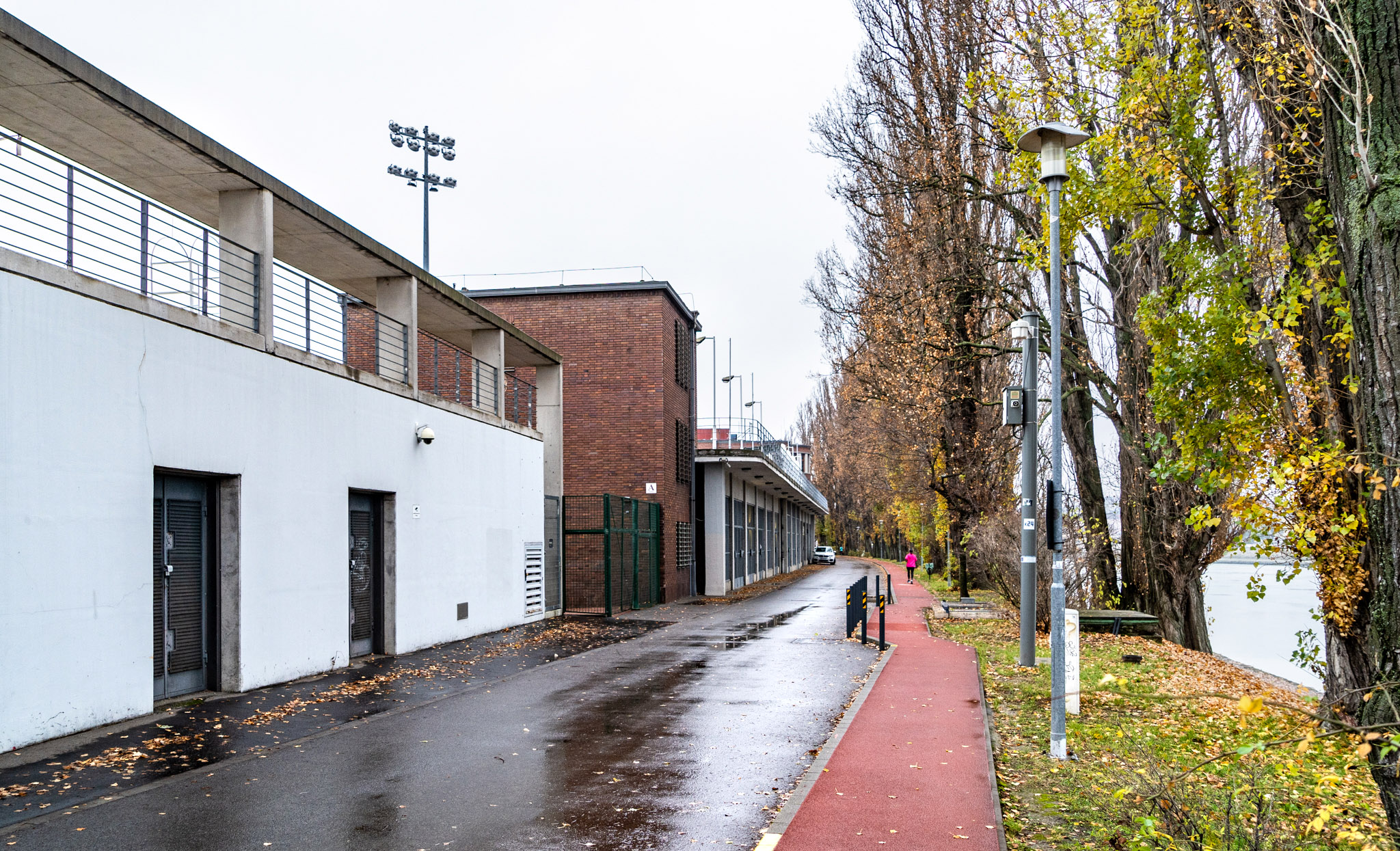
The Hajós Alfréd National Swimming Pool in 1931 (Photo: Fortepan/No.: 58265)

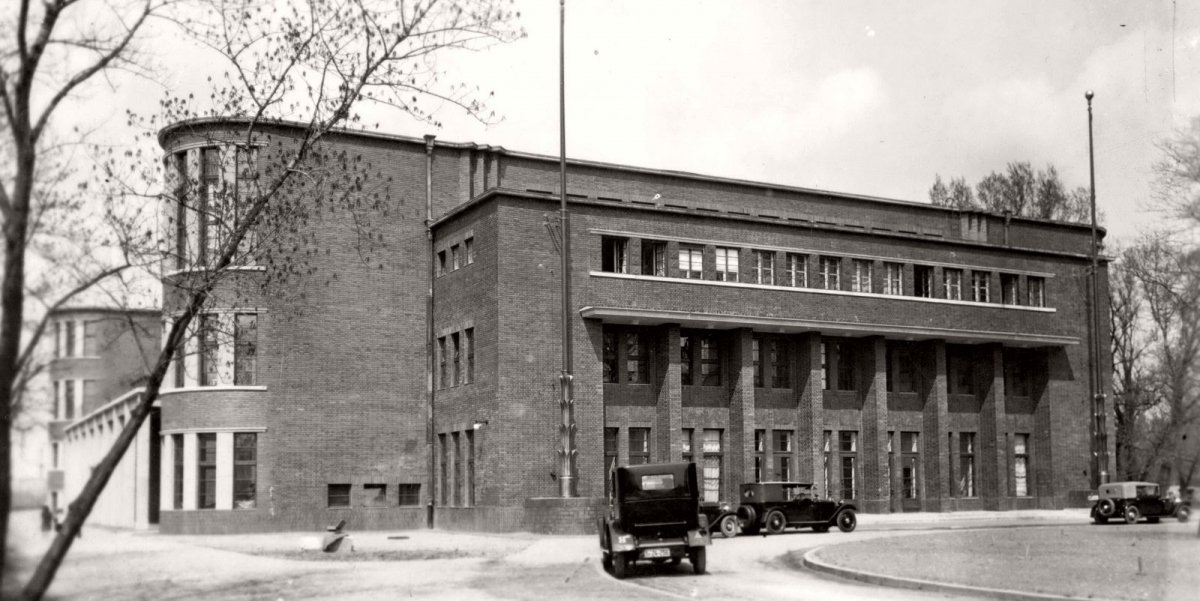



































Hozzászólások
Log in or register to comment!
Login Registration